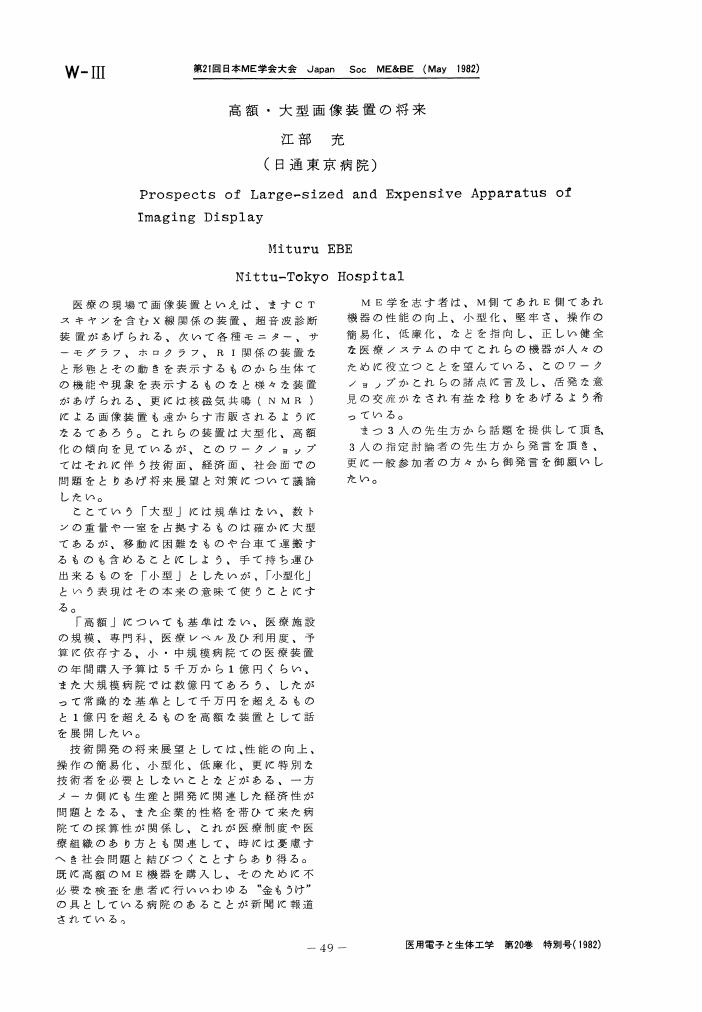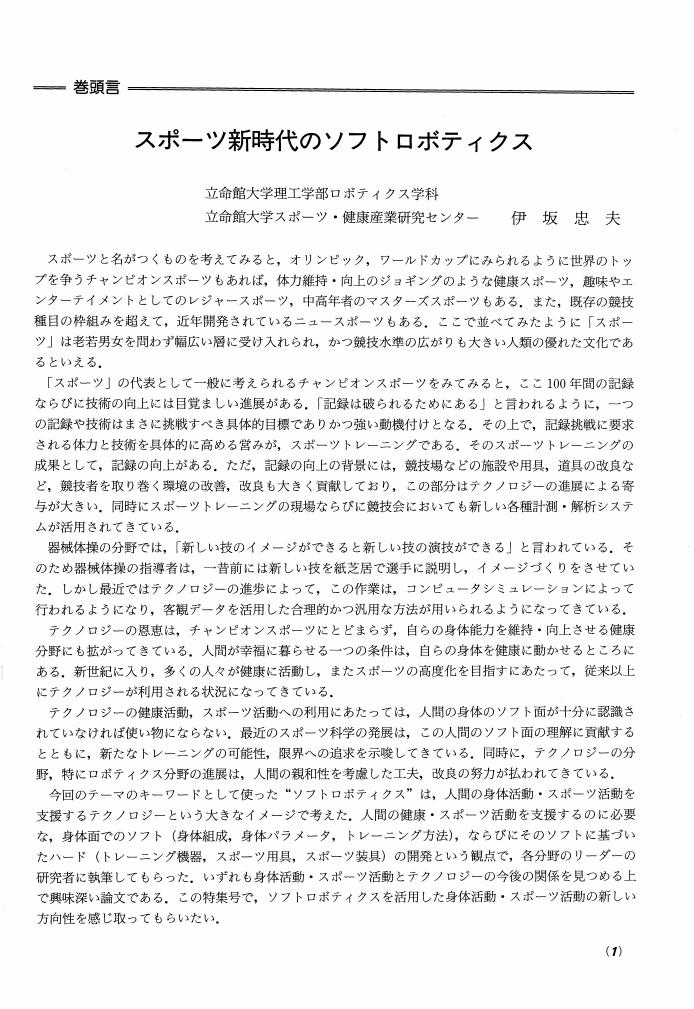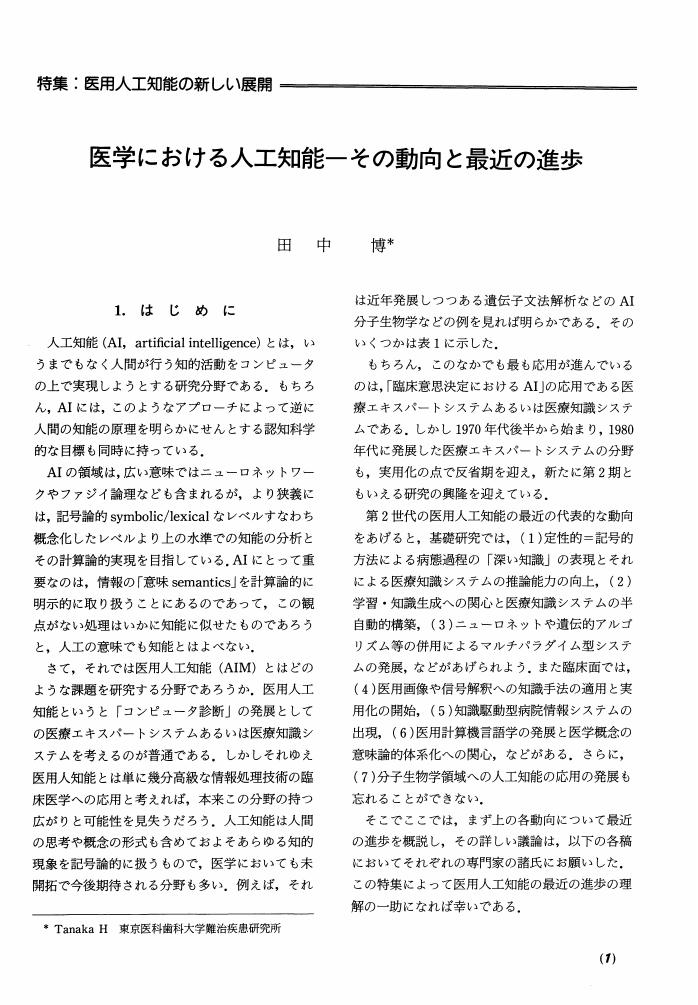1 0 0 0 OA 電磁誘導ハイパーサーミアによる頭部加温の基礎検討
- 著者
- 晴山 典彦 藤井 麻美子 酒本 勝之 金井 寛
- 出版者
- 一般社団法人 日本生体医工学会
- 雑誌
- 医用電子と生体工学 (ISSN:00213292)
- 巻号頁・発行日
- vol.34, no.3, pp.230-237, 1996 (Released:2011-10-14)
- 参考文献数
- 6
It is very difficult to heat deep seated tumor surrounded by low conductivity tissues, such as bone and fat. We proposed a new RF magnetically induced method for this deep regional hyperthermia. To get high density of induced current in deep tissues, we arranged 4 coils around the sphere agar phantom. The frequency of exciting current is 13.56MHz. In this paper, we will show the calculation method of SAR distribution and temperature distribution in 3D inhomogeneous model. We also discuss the possibility of this heating method from both experiment and calculated results. In the phantom experiment we examined two types of the coils. The calculated results and experimental results show a good agreement, these therefore, the reliability of this calculation method was confirmed. The heating pattern of these coils were not very effective for deep regional hyperthermia. We also calculated temperature distribution in the brain model which was constructed from CT images. We assumed tumor in the brain with half of the blood flow compare to normal tissue. Deep seated tumor was heated by the effect of inhomogeneity and blood flow, except there were hot spots near the coil. In the case of shallow region heating, we can get effective localized heating pattern. From these results, we cannot surely say that this heating method is quite sufficient for deep regional hyperthermia. But since there is no other method to successfully heat the brain non-invasively, this kind of examination with other coil patterns must be continued.
1 0 0 0 OA 治療の方法と効果
- 著者
- 平岡 真寛
- 出版者
- 一般社団法人 日本生体医工学会
- 雑誌
- BME (ISSN:09137556)
- 巻号頁・発行日
- vol.6, no.5, pp.40-47, 1992-05-10 (Released:2011-09-21)
- 参考文献数
- 7
- 被引用文献数
- 4
1 0 0 0 OA 拡散光トモグラフィ(光CT)の研究開発
- 著者
- 山田 幸生
- 出版者
- 一般社団法人 日本生体医工学会
- 雑誌
- BME (ISSN:09137556)
- 巻号頁・発行日
- vol.17, no.4, pp.35-43, 2003-07-10 (Released:2011-09-21)
- 参考文献数
- 13
1 0 0 0 OA 生体電気インピーダンスとその臨床応用
- 著者
- 金井 寛
- 出版者
- 一般社団法人 日本生体医工学会
- 雑誌
- 医用電子と生体工学 (ISSN:00213292)
- 巻号頁・発行日
- vol.20, no.3, pp.140-146, 1982-06-30 (Released:2011-03-09)
- 参考文献数
- 41
- 被引用文献数
- 1
1 0 0 0 OA 専門別研究会報告
- 出版者
- 一般社団法人 日本生体医工学会
- 雑誌
- 医用電子と生体工学 (ISSN:00213292)
- 巻号頁・発行日
- vol.24, no.3, pp.198-206, 1986-06-30 (Released:2011-10-14)
1 0 0 0 OA 核磁気共鳴現象によるイメージング
- 著者
- 阿部 善右衛門 山田 芳文
- 出版者
- 一般社団法人 日本生体医工学会
- 雑誌
- 医用電子と生体工学 (ISSN:00213292)
- 巻号頁・発行日
- vol.17, no.7, pp.530-537, 1979-12-30 (Released:2011-03-09)
- 参考文献数
- 37
1 0 0 0 OA 核磁気緩和時間による腫瘍検出法に関する基礎的研究
- 著者
- 田中 邦雄 清水 哲也 佐野 文男 阿部 善右衛門
- 出版者
- 一般社団法人 日本生体医工学会
- 雑誌
- 医用電子と生体工学 (ISSN:00213292)
- 巻号頁・発行日
- vol.14, no.1, pp.25-32, 1976-02-29 (Released:2011-03-09)
- 参考文献数
- 19
Since R. Damadian suggested the detectability of tumors by nuclear magnetic resonance (NMR), the authors have focused their attention on the facts such as the quantities related to the kinds of water and tissues. And at least qualitative information could be non-invasively obtained.In this paper, in order to clarify the applicabilities of our proposed magnetic focusing method for non-invasive tumor detection, the nuclear magnetic relaxation time (T1) of transplanted malignant tumor (AH-66) in rat, excised normal and cancerous tissues in man were measured in vitro experiment.The resultant findings are summarized as followings.1) Transplanted malignant tumor in rat showed (30-120) % longer value of T1 than that of the respective normal tissues.2) In 14 cases of the uterus, breast and stomach in man, the T1 of cancerous tissues increased (10-150) % than that of their normal portions.3) When mixed tissue was studied, T1 changed as the ratio of tumor to normal tissue changed.4) The longer the time elapsed, the greater the T1 value exhibited by normal and the smaller the T1 measured for cancerous tissue. When both normal and cancerous tissues coexist, T1 decrement of the tissue is small.
1 0 0 0 OA 生命と技術
- 著者
- 中村 雄二郎
- 出版者
- 一般社団法人 日本生体医工学会
- 雑誌
- BME (ISSN:09137556)
- 巻号頁・発行日
- vol.9, no.1, pp.64-67, 1995-01-10 (Released:2011-09-21)
- 参考文献数
- 4
1 0 0 0 OA 高額・大型画像装置の将来 ワークショップ
- 出版者
- 一般社団法人 日本生体医工学会
- 雑誌
- 医用電子と生体工学 (ISSN:00213292)
- 巻号頁・発行日
- vol.20, no.Supplement, pp.49-49, 1982-04-15 (Released:2011-10-14)
1 0 0 0 OA 不整脈自動監視ソフトウェアのための基礎的検討
- 著者
- 岡田 正彦
- 出版者
- 一般社団法人 日本生体医工学会
- 雑誌
- 医用電子と生体工学 (ISSN:00213292)
- 巻号頁・発行日
- vol.13, no.6, pp.356-359, 1975-12-30 (Released:2011-03-09)
- 参考文献数
- 7
- 被引用文献数
- 1
Software techniques for solving two problems in monitoring the electrocardiograms of critically ill patients are described in this Paper.(1) Logical filter for detection of a QRS complex : High frequency components are centered around the peak-points of a QRS complex and the waveform is roughly symmetrical with respect to a vertical line through.the peak-point. These characteristics of the QRS complex are utilized in designing the filter. This filter distinguishes the QRS complex well from other parts of electrocardiograms and various noises.(2) Pattern recognition of a QRS complex with correlation coefficient : One typical QRS complex is selected and designated as “templet”. Subsequent QRS complexes are compared with this “templet” one by one. The degree of similarity to the “templet” is evaluated by a correlation coefficient. Without accurate detection of a QRS duration, 10 points before and after the peak of R-wave respectively (totalling 20 points) are regarded as one QRS complex (sampling rate : 250 points/second). Our method makes it possible to recognize ectopic beats automatically even if noises exist to some extent.
1 0 0 0 OA スポーツ新時代のソフトロボティクス
- 著者
- 伊坂 忠夫
- 出版者
- 一般社団法人 日本生体医工学会
- 雑誌
- BME (ISSN:09137556)
- 巻号頁・発行日
- vol.16, no.11, pp.1-1, 2002-11-10 (Released:2011-09-21)
1 0 0 0 OA ウェアラブル情報機器におけるマイクロメカトロニクス技術
- 著者
- 佐々木 健
- 出版者
- 一般社団法人 日本生体医工学会
- 雑誌
- BME (ISSN:09137556)
- 巻号頁・発行日
- vol.17, no.6, pp.37-42, 2003-10-10 (Released:2011-09-21)
- 参考文献数
- 13
1 0 0 0 OA 補助人工心臓駆動下の循環系オンライン同定
- 著者
- 吉澤 誠 馮 金山 竹田 宏 三浦 誠 山家 智之 片平 美明 仁田 新一
- 出版者
- 一般社団法人 日本生体医工学会
- 雑誌
- 医用電子と生体工学 (ISSN:00213292)
- 巻号頁・発行日
- vol.26, no.2, pp.83-91, 1988-06-30 (Released:2011-10-14)
- 参考文献数
- 10
- 被引用文献数
- 8
A new hemodynamic measurement system was developed by using the left ventricular assist device (LVAD) to estimate the cardiac function of the natural heart. The LVAD was placed between the left atrium and the aorta for the patient with deeply failed left ventricular pump function and driven by the pneumatic drive unit.In the personal computer system, an on-line identification method was implemented to estimate the coefficients of the autoregressive moving average (ARMA) model whose input and output were corresponding to the drive pressure of the drive unit and the pump flow from LVAD, respectively.Two driving modes of LVAD were compared with each other. One is the co-pulsation mode in which the systolic period of LVAD coincides with that of the natural heart, and the other is the counter-pulsation mode in which the systolic period of LVAD is followed by that of the natural heart.This comparison clarified that the capability of cardiac function of the natural heart could be quantitatively evaluated on the basis of the difference between two frequency responses derived from the coefficients of the ARMA model. This implies that the proposed method is useful for making a decision on weaning from LVAD in the clinical case.
1 0 0 0 OA 散乱光による経皮バイオテレメトリの基礎的研究
- 著者
- 工藤 信樹 清水 孝一 松本 伍良
- 出版者
- 一般社団法人 日本生体医工学会
- 雑誌
- 医用電子と生体工学 (ISSN:00213292)
- 巻号頁・発行日
- vol.23, no.3, pp.194-198, 1985-06-30 (Released:2011-10-14)
- 参考文献数
- 12
- 被引用文献数
- 3
A new method of biotelemetry is proposed, which realizes nonrestrained acquisition of biological signals using the infrared light diffused out from animal skin. This technique is fundamentally different from conventional telemetry techniques which use radio-frequency electromagnetic waves.An optical transmitter which consists of some LED's is implanted beneath the skin. Biological information such as ECG signal is collected in vivo and the light emitted from the LED's is modulated by the signal. The light transmitted through the skin is strongly diffused and spread out in a wide angle. The light is collected by the remotely located optical receivers and the biological information is obtained by demodulating the signal. Thus, the biological information in vivo is obtained without restraining the object with cables or optical fibers.In order to verify the possibility of the above technique, a system, which obtains an ECG from laboratory animals, has been developed. An infrared light was chosen due to its invisibility and high transmittance through the skin. Considering the stability of the communication link and the power consumption of the implanted transmitter, PFM (Pulse Frequency Modulation) technique was used. Using the system, the transcutaneous ECG telemetry was performed successfully.In the experiment, the indirect light reflected and scattered by the walls, the ceiling and the floor was shown to be useful in the optical telemetry. Light transmission patterns through the skin of a mouse were measured. The results suggest the possibility of telemetry even from the deep part of the body cavity.It is concluded that recent progress of optical and electronic technologies have reached the point, where transcutaneous optical telemetry of biological signals has become practically possible.
1 0 0 0 OA 熱流解析による皮膚血流量の算定
- 著者
- 岩谷 眞宏
- 出版者
- 一般社団法人 日本生体医工学会
- 雑誌
- 医用電子と生体工学 (ISSN:00213292)
- 巻号頁・発行日
- vol.20, no.4, pp.249-255, 1982-08-30 (Released:2011-03-09)
- 参考文献数
- 20
- 被引用文献数
- 3
Using the thermograph and other instruments, a new and noninvasive method of evaluating the skin blood flow rate has been developed. Supply of heat to the skin depends on heat transportation by blood flow, on conduction from deep tissue and on the metabolic production in the skin. On the other hand, the skin loses the heat to surroundings through radiation, evaporation and convection. The heat in each case can be expressed as a function of temperature. In a comfortably air-conditioned room, there is little change in the skin temperature. Therefore, the heat flowing into the skin is presumed to equilibrate the heat flowing out. Rearranging these equations, the formula for the skin blood flow rate is obtained. For calculation, skin temperature, core temperature, ambient temperature and diameter of the leg were measured and other figures were postulated on the basis of anatomical or physiological data. Skin temperature was measured using a thermograph. Core temperature was measured by the use of deep body thermometer. Both procedures are noninvasive. Six points in a patient were subjected to the measurement. These included 10cm above the knee, 10cm below the knee and dorsum of the foot on each limb.The skin blood flow rates calculated by this method were found to be15.0±9.7ml/1009/min (n=88) on the thigh, 14.5±10ml/100g/min (n=85) on the leg and 13.3±11.0ml/100g/min (n=87) on the foot. These values corresponded well with the values reported by others, who used the plethysmographic or clearance method. The relationship between skin temperature and skin blood flow was exponential as has been pointed out by Montogomery and others. After unilateral lumbar sympathectomy in thirteen cases, the skin blood flow rate and the skin temperature on the side operated on showed statistically higher values than on the side not operated on. Especially the skin blood flow rate on the foot was higher by 50%. This fact was also compatible with previous studies on the effects of sympathectomy.As a. result, this noninvasive method of evaluating the skin blood flow is practically acceptable and will be a new addition to diagnostic armamentarium for various diseases.
1 0 0 0 OA 知覚図形の場による錯視現象の解析
- 著者
- 川端 信男
- 出版者
- 一般社団法人 日本生体医工学会
- 雑誌
- 医用電子と生体工学 (ISSN:00213292)
- 巻号頁・発行日
- vol.14, no.4, pp.289-295, 1976-08-30 (Released:2011-03-09)
- 参考文献数
- 9
Some geometrical optical illusions are analyzed in terms of the perceptual field. Psychological distance is introduced which is different from physical distance, and this difference explains theillusion.A theory is proposed which represents the psychological distance as a function of the field potential induced by the stimulus figure. By defining the psychological distance and line, the straight line and the length in the figure can be determined, and geometrical optical illusions cam be explained as distortions of the metric of the perceptual field.
1 0 0 0 OA 生きた筋肉のX線回折による分析
- 著者
- 八木 直人
- 出版者
- 一般社団法人 日本生体医工学会
- 雑誌
- BME (ISSN:09137556)
- 巻号頁・発行日
- vol.1, no.11, pp.884-886, 1987-11-10 (Released:2011-09-21)
- 参考文献数
- 7
X線回折法は, 非破壊的に物質の内部を分子のレベルで調べることができる. この手法を生体に適用することにより, 生体内での筋肉の微細構造を知ることが可能であり, 生体の検査法として各種の応用が考えられる.
1 0 0 0 OA 高度医療技術のテクノロジー・アセスメント
- 著者
- 久繁 哲徳
- 出版者
- 一般社団法人 日本生体医工学会
- 雑誌
- BME (ISSN:09137556)
- 巻号頁・発行日
- vol.7, no.11, pp.19-26, 1993-11-10 (Released:2011-09-21)
- 参考文献数
- 25
1 0 0 0 OA 医学における人工知能―その動向と最近の進歩
- 著者
- 田中 博
- 出版者
- 一般社団法人 日本生体医工学会
- 雑誌
- BME (ISSN:09137556)
- 巻号頁・発行日
- vol.7, no.5, pp.1-16, 1993-05-10 (Released:2011-09-21)
- 参考文献数
- 61
1 0 0 0 OA 医用画像と応用人工知能
- 著者
- 鳥脇 純一郎
- 出版者
- 一般社団法人 日本生体医工学会
- 雑誌
- BME (ISSN:09137556)
- 巻号頁・発行日
- vol.7, no.5, pp.17-27, 1993-05-10 (Released:2011-09-21)
- 参考文献数
- 53











